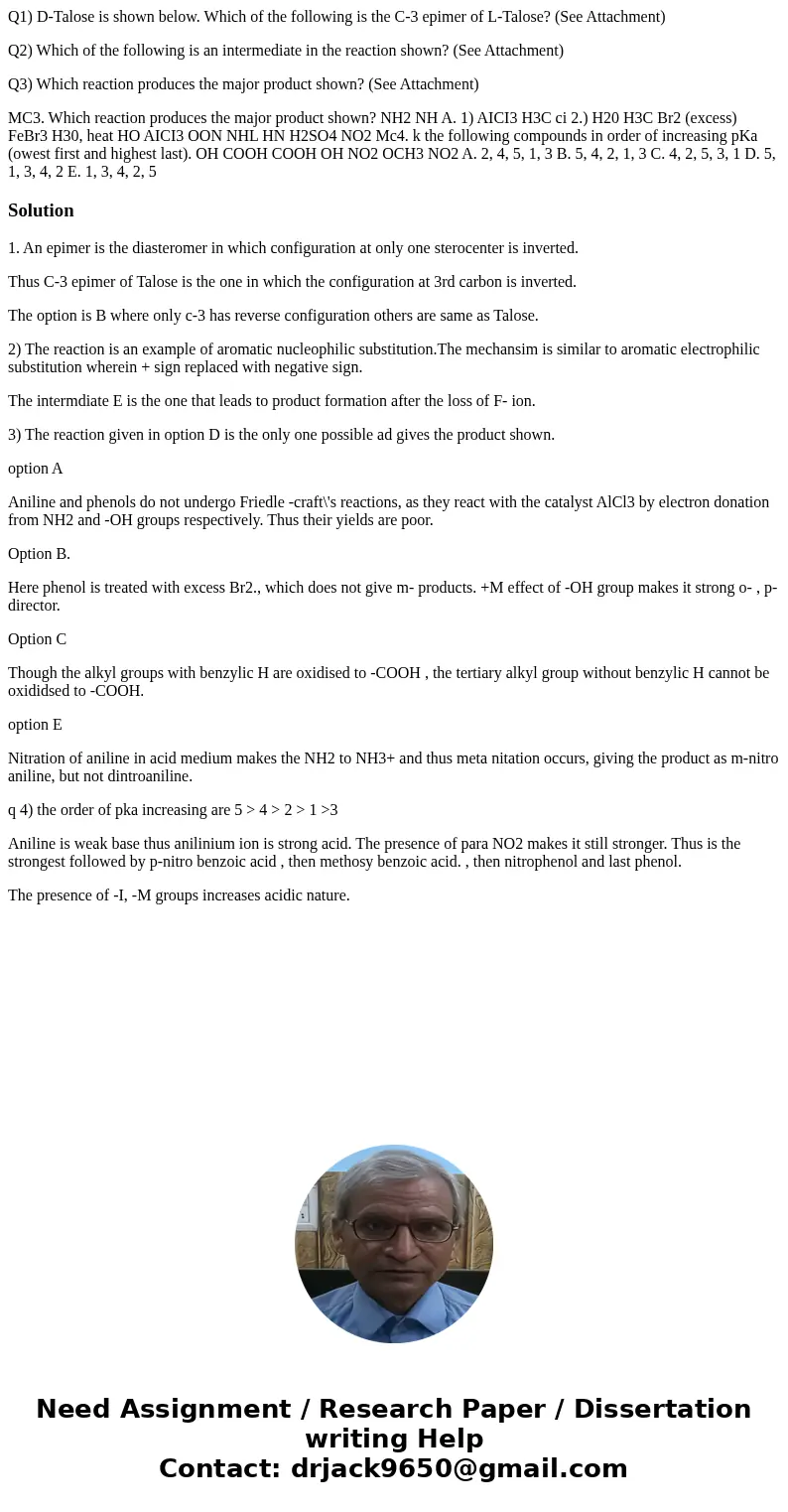Q1 DTalose is shown below Which of the following is the C3 e
Q1) D-Talose is shown below. Which of the following is the C-3 epimer of L-Talose? (See Attachment)
Q2) Which of the following is an intermediate in the reaction shown? (See Attachment)
Q3) Which reaction produces the major product shown? (See Attachment)
MC3. Which reaction produces the major product shown? NH2 NH A. 1) AICI3 H3C ci 2.) H20 H3C Br2 (excess) FeBr3 H30, heat HO AICI3 OON NHL HN H2SO4 NO2 Mc4. k the following compounds in order of increasing pKa (owest first and highest last). OH COOH COOH OH NO2 OCH3 NO2 A. 2, 4, 5, 1, 3 B. 5, 4, 2, 1, 3 C. 4, 2, 5, 3, 1 D. 5, 1, 3, 4, 2 E. 1, 3, 4, 2, 5Solution
1. An epimer is the diasteromer in which configuration at only one sterocenter is inverted.
Thus C-3 epimer of Talose is the one in which the configuration at 3rd carbon is inverted.
The option is B where only c-3 has reverse configuration others are same as Talose.
2) The reaction is an example of aromatic nucleophilic substitution.The mechansim is similar to aromatic electrophilic substitution wherein + sign replaced with negative sign.
The intermdiate E is the one that leads to product formation after the loss of F- ion.
3) The reaction given in option D is the only one possible ad gives the product shown.
option A
Aniline and phenols do not undergo Friedle -craft\'s reactions, as they react with the catalyst AlCl3 by electron donation from NH2 and -OH groups respectively. Thus their yields are poor.
Option B.
Here phenol is treated with excess Br2., which does not give m- products. +M effect of -OH group makes it strong o- , p- director.
Option C
Though the alkyl groups with benzylic H are oxidised to -COOH , the tertiary alkyl group without benzylic H cannot be oxididsed to -COOH.
option E
Nitration of aniline in acid medium makes the NH2 to NH3+ and thus meta nitation occurs, giving the product as m-nitro aniline, but not dintroaniline.
q 4) the order of pka increasing are 5 > 4 > 2 > 1 >3
Aniline is weak base thus anilinium ion is strong acid. The presence of para NO2 makes it still stronger. Thus is the strongest followed by p-nitro benzoic acid , then methosy benzoic acid. , then nitrophenol and last phenol.
The presence of -I, -M groups increases acidic nature.

 Homework Sourse
Homework Sourse